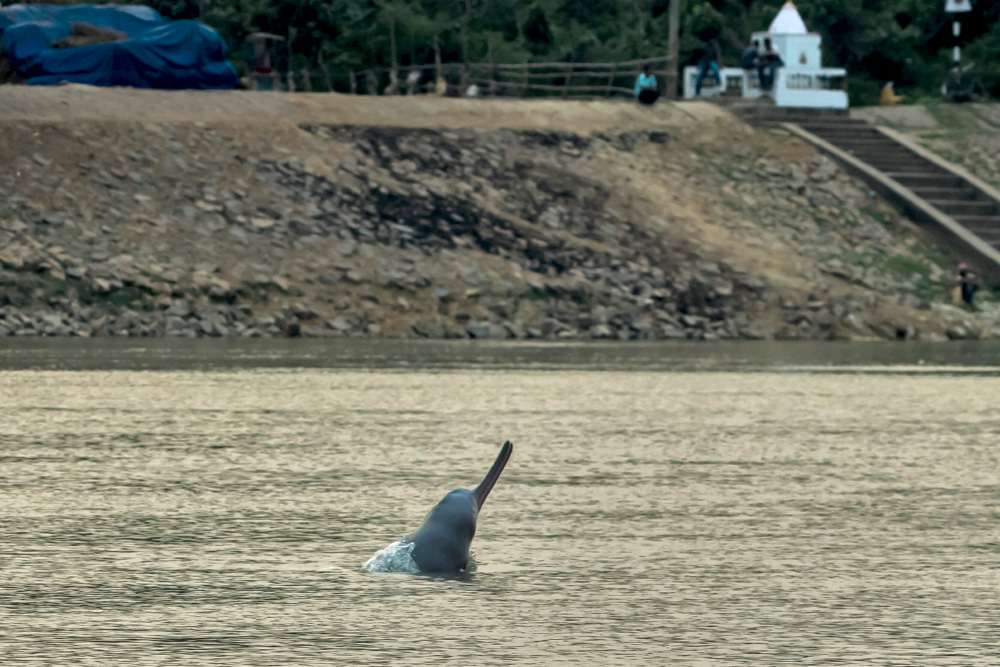The Gangetic or South Asian River Dolphin (Platanista gangetica gangetica) or Shushuk, is an Endangered dolphin that lives in one of the most densely populated regions of the world – in the rivers of India, Nepal, Pakistan and Bangladesh (IUCN Red List; Braulik and Smith 2017).
While the primary threat to these blind river dolphins is fishing gear entanglement, the loss and fragmentation of riverine habitat and changes in water flow, due to the construction of dams and irrigation projects has become an immediate problem. The attached picture is from a series of pictures between Farakka Barrage and Ganga Sagar in West Bengal.
In the dry season, I found only 50 to 70 dolphins, between Farakka and Ganga Sagar. According to experts, recent surveys from Farakka to Kakdwip (Hooghly) have recorded a greater population size for this stretch. Seasonal trends and standard methods of population monitoring are required to make results from different studies comparable and make populations trends robust.
During my time on the river, the most dolphins were seen at Sabujdwip and Khamargachi in Hooghly district, Bakshi near Bagnan in Howrah district and from Katwa to Nabadwip in Nadia district and Nayachar. Highly polluted areas such as Kolaghat and Gadiara, very close to human habitation in Katwa and Nabadwip have surprisingly high sighting rates of dolphins. The long-term effect of this continuous pollution on the health and viability of endangered dolphins needs to be properly assessed.
There is no easy way of conserving dolphins or conserving river biodiversity without allowing for enough water, stopping unnatural erosion and silting of confluences, and management of fisheries. It is a long process but our National Aquatic mammal still has a chance if we collectively work to make it happen. The Farakka barrage has been proven by numerous studies to be ineffective for the purpose it was built. World over the movement from dams to traditional methods of irrigation and water storage are taking place. Perhaps it is time we let the river flow freely, so that all that depend on it, including humans, can survive.
With inputs from Dipani Sutaria and Nachiket Kelkar.


 CI is a non-profit, non-commercial portal that aims to facilitate wildlife and nature conservation by providing reliable information and the tools needed to campaign effectively.
CI is a non-profit, non-commercial portal that aims to facilitate wildlife and nature conservation by providing reliable information and the tools needed to campaign effectively.